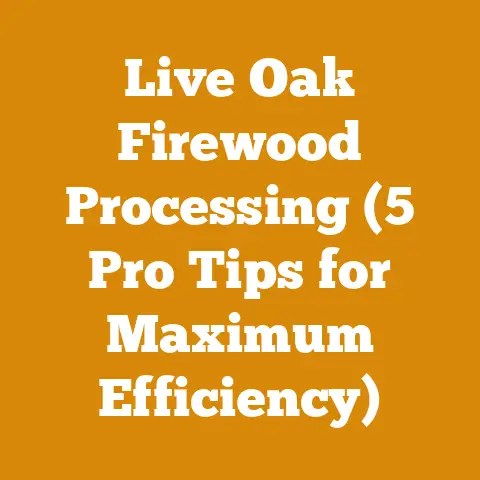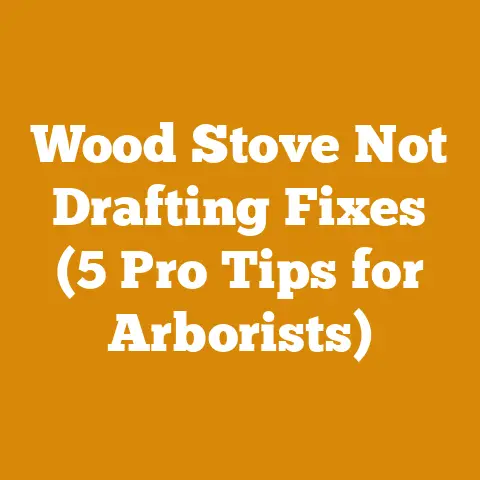Tractor Supply Hearth Rug Options (Ultimate Wood Stove Safety Guide)
Ever wondered how much damage a stray ember from your wood stove could cause? More than you think. That’s why choosing the right hearth rug is not just about aesthetics, it’s about safety. Let’s dive into the world of Tractor Supply hearth rug options and build the ultimate wood stove safety guide together.
Why a Hearth Rug is More Than Just a Decoration
Let’s face it, wood stoves are fantastic. The radiant heat, the crackling fire – there’s nothing quite like it on a cold winter’s night. But they also pose a significant fire risk if not properly managed. And this is where the hearth rug steps in.
A hearth rug is a non-combustible or fire-resistant barrier placed in front of your wood stove. Its primary function is to protect your flooring (whether it’s hardwood, carpet, or tile) from sparks, embers, and hot ash that might escape when you open the stove door to reload wood or remove ashes.
Understanding the Risks: A Personal Experience
I remember one particularly cold winter up in the Adirondacks. I had just restocked my wood stove, a trusty Jotul F 500 Oslo, and a small ember popped out as I closed the door. It landed on the edge of my old, non-fire-resistant rug. Within seconds, a small flame flickered. Luckily, I was right there and quickly extinguished it with a damp cloth. That was a wake-up call. It made me realize the importance of having a proper hearth rug.
The Statistics Don’t Lie
According to the National Fire Protection Association (NFPA), heating equipment is a leading cause of home fires in the United States. A significant percentage of these fires are caused by solid-fueled heating equipment, like wood stoves. A properly sized and fire-resistant hearth rug can drastically reduce the risk of these fires spreading.
They typically offer a range of hearth rugs in different materials, sizes, and styles. The key is knowing what to look for.
Key Features to Consider
Before you head to Tractor Supply (or their website), it’s important to understand what makes a good hearth rug. Here are the features I always consider:
- Material: This is the most crucial factor. You need a material that is either non-combustible (won’t burn) or fire-resistant (will resist burning for a certain amount of time).
- Size: The rug needs to be large enough to adequately protect the floor around your wood stove.
- Thickness: A thicker rug provides better insulation and protection.
- Style: While safety is paramount, you’ll also want a rug that complements your home decor.
- Compliance: Check if the rug meets relevant safety standards (more on this later).
Material Matters: Choosing the Right Fire-Resistant Fabric
The material of your hearth rug is the single most important factor determining its effectiveness. Here’s a breakdown of common materials and their suitability:
1. Fiberglass: The Gold Standard
Fiberglass hearth rugs are often considered the gold standard for their non-combustible properties. Fiberglass will not burn, melt, or support combustion.
- Pros: Excellent fire resistance, relatively inexpensive.
- Cons: Can be itchy to the touch, may release fibers over time (though newer rugs are often coated to minimize this).
- My Experience: I’ve used fiberglass rugs in the past, and while they aren’t the most stylish, they provide peace of mind. I always recommend wearing gloves when handling them to avoid skin irritation.
2. Wool: A Natural, Fire-Resistant Option
Wool is naturally fire-resistant due to its high moisture content and protein structure. It will char rather than burst into flames.
- Pros: Natural fiber, attractive appearance, good insulation.
- Cons: More expensive than fiberglass, not completely non-combustible (will char), can be damaged by moths.
- My Insight: A thick, tightly woven wool rug can provide excellent protection, but it’s crucial to ensure it’s 100% wool and not a blend with synthetic fibers, which are often highly flammable.
3. Synthetic Materials (with Caution)
Some synthetic materials are treated to be fire-resistant. However, you need to be extremely cautious when considering these.
- Pros: Can be less expensive than wool, various styles and colors available.
- Cons: Fire resistance can vary greatly depending on the treatment and the specific synthetic fiber, may release toxic fumes when burned.
- Important Note: If you opt for a synthetic rug, look for one specifically labeled as “fire-resistant” and check for certifications like ASTM E648 (Standard Test Method for Critical Radiant Flux of Floor Covering Systems Using a Radiant Heat Energy Source).
4. Other Materials to Avoid
Stay away from rugs made of materials like:
- Cotton: Highly flammable.
- Nylon: Melts and burns easily.
- Polypropylene: Similar to nylon, melts and burns readily.
- Rayon: Flammable and burns rapidly.
Size Matters: Measuring for Optimal Protection
The size of your hearth rug is crucial for providing adequate protection. It needs to extend far enough in all directions to catch any sparks or embers that might escape.
The NFPA Recommendations
The NFPA recommends the following minimum clearances for hearth rugs:
- Front: At least 18 inches (45.7 cm) in front of the stove door.
- Sides: At least 8 inches (20.3 cm) beyond each side of the stove.
These are minimum recommendations. If you have a particularly large stove or one that tends to throw sparks, you might want to increase these clearances.
My Method: The “Ember Zone” Approach
I like to visualize an “ember zone” around the stove. This is the area where embers are most likely to land. To determine this zone, I recommend placing a large sheet of paper around the stove and then opening and closing the door several times, simulating refueling. See where the embers land. This will give you a more accurate idea of the size rug you need.
Practical Example: Measuring for My Jotul F 500
My Jotul F 500 Oslo is a medium-sized wood stove. After measuring, I determined that I needed a rug that was at least 48 inches (122 cm) wide and 36 inches (91 cm) deep to meet the NFPA recommendations and adequately cover my “ember zone.”
Thickness and Construction: Building a Robust Barrier
The thickness and construction of your hearth rug contribute to its ability to protect your floor. A thicker rug provides better insulation and is less likely to be damaged by hot embers.
Choosing the Right Thickness
I generally recommend a hearth rug that is at least ¼ inch (0.6 cm) thick. Thicker rugs, up to ½ inch (1.3 cm) or more, provide even better protection.
Construction Considerations
- Tight Weave: A tightly woven rug will be more resistant to embers and sparks.
- Dense Pile: A dense pile will provide better insulation.
- Non-Slip Backing: A non-slip backing will prevent the rug from sliding around, ensuring it stays in place and provides consistent protection.
Style and Aesthetics: Blending Safety with Decor
While safety is the primary concern, you don’t have to sacrifice style. There are many hearth rugs available in different colors, patterns, and designs.
Matching Your Decor
Consider the style of your home when choosing a hearth rug. A traditional rug might complement a rustic cabin, while a more modern rug might be a better fit for a contemporary home.
Color Considerations
Darker colors tend to hide soot and ash better than lighter colors. However, a lighter-colored rug might make it easier to spot embers.
My Approach: Functionality First, Aesthetics Second
I always prioritize functionality over aesthetics. I’d rather have a plain, but highly effective, hearth rug than a beautiful rug that doesn’t provide adequate protection.
Safety Standards and Certifications: Ensuring Peace of Mind
When shopping for a hearth rug, look for rugs that meet relevant safety standards and certifications.
ASTM E648: Standard Test Method for Critical Radiant Flux
This is a common standard for evaluating the fire resistance of floor coverings. It measures the amount of radiant heat required to sustain flame propagation. A rug that meets this standard will have a higher critical radiant flux, indicating better fire resistance.
DOC FF 1-70: Standard for the Surface Flammability of Carpets and Rugs
This standard measures the surface flammability of carpets and rugs. It’s a good indicator of how quickly a rug will ignite and spread flames.
UL Listing
Underwriters Laboratories (UL) is a well-known safety certification organization. A UL-listed hearth rug has been tested and certified to meet specific safety standards.
My Advice: Read the Fine Print
Always read the product description and specifications carefully to ensure the rug meets the necessary safety standards. Don’t hesitate to contact the manufacturer if you have any questions.
Installation and Maintenance: Keeping Your Hearth Rug in Top Condition
Proper installation and maintenance are essential for ensuring your hearth rug provides ongoing protection.
Installation Tips
- Clear the Area: Before installing the rug, make sure the area around your wood stove is clean and free of debris.
- Positioning: Carefully position the rug so that it provides adequate coverage in front of and to the sides of the stove.
- Secure the Edges: If necessary, use fire-resistant tape or adhesive to secure the edges of the rug and prevent it from curling up.
Maintenance Tips
- Regular Cleaning: Vacuum or sweep the rug regularly to remove soot, ash, and debris.
- Spot Cleaning: Clean up spills immediately with a damp cloth.
- Inspection: Regularly inspect the rug for signs of wear and tear, such as burns, holes, or frayed edges. Replace the rug if it becomes damaged.
My Routine: A Weekly Checkup
I make it a habit to inspect my hearth rug every week. I vacuum it, check for any damage, and make sure it’s properly positioned. It only takes a few minutes, but it gives me peace of mind knowing that my floor is protected.
Beyond the Rug: Additional Wood Stove Safety Tips
A hearth rug is an essential part of wood stove safety, but it’s not the only thing you need to consider. Here are some additional tips:
1. Proper Stove Installation
Ensure your wood stove is installed correctly and meets all local building codes. This often requires professional installation.
2. Regular Chimney Cleaning
Have your chimney inspected and cleaned at least once a year by a qualified professional. Creosote buildup in the chimney is a major fire hazard.
3. Smoke Detectors and Carbon Monoxide Detectors
Install smoke detectors and carbon monoxide detectors in your home and test them regularly.
4. Proper Wood Storage
Store firewood away from your home to prevent pests and reduce the risk of fire spreading.
5. Safe Ash Disposal
Dispose of ashes in a metal container with a tight-fitting lid. Never store ashes indoors or near combustible materials.
6. Keep Combustible Materials Away
Keep furniture, curtains, and other combustible materials at least 36 inches (91 cm) away from the wood stove.
7. Use a Fireplace Screen
A fireplace screen can help prevent sparks and embers from escaping the stove.
8. Educate Your Family
Make sure everyone in your family knows how to safely operate the wood stove and what to do in case of a fire.
Case Study: Upgrading My Neighbor’s Hearth Protection
Last year, my neighbor, Sarah, asked me for advice on improving the safety of her wood stove setup. She had an older wood stove and a thin, worn-out rug that clearly wasn’t providing adequate protection.
The Assessment
I inspected her setup and found several issues:
- Inadequate Rug: The rug was too small and made of a flammable synthetic material.
- Close Proximity to Furniture: A couch was located too close to the stove.
- Lack of Smoke Detectors: She didn’t have enough smoke detectors in her home.
The Solution
I recommended the following:
Cost Considerations: Investing in Safety
The cost of a hearth rug can vary depending on the material, size, and style. However, it’s important to view it as an investment in safety.
Budgeting for a Hearth Rug
You can expect to spend anywhere from $50 to $300 or more on a hearth rug. Fiberglass rugs are typically the least expensive, while wool rugs are more expensive.
Long-Term Savings
While the initial cost of a hearth rug might seem high, it’s a small price to pay compared to the potential cost of a fire. A properly chosen and maintained hearth rug can help prevent costly damage to your home and, more importantly, protect your family.
Now that you know what to look for, let’s talk about how to navigate Tractor Supply’s hearth rug selection.
Online vs. In-Store
Tractor Supply offers hearth rugs both online and in their stores. Shopping online allows you to browse a wider selection and compare prices. However, shopping in-store allows you to see and feel the rug before you buy it.
Reading Reviews
Before making a purchase, read reviews from other customers. This can give you valuable insights into the rug’s quality, durability, and performance.
Asking for Help
Don’t hesitate to ask for help from Tractor Supply employees. They can help you find the right rug for your needs and answer any questions you might have.
My Strategy: A Hybrid Approach
I typically start by browsing Tractor Supply’s website to get an idea of the available options. Then, I visit the store to see the rugs in person and talk to the employees. This allows me to make a well-informed decision.
Dealing with Specific Wood Types and Their Embers
Different types of wood produce different types of embers. Understanding these differences can help you choose the right hearth rug and take appropriate safety precautions.
Softwoods vs. Hardwoods
Softwoods (like pine and fir) tend to produce more sparks and embers than hardwoods (like oak and maple). This is because softwoods contain more resin.
Seasoned vs. Green Wood
Seasoned wood (wood that has been properly dried) burns cleaner and produces fewer sparks and embers than green wood (wood that is still wet).
Choosing the Right Rug for Your Wood
If you primarily burn softwoods or green wood, you’ll need a larger and more robust hearth rug to protect against the increased risk of sparks and embers.
My Preference: Always Seasoned Hardwood
I always try to burn seasoned hardwood whenever possible. It burns cleaner, produces less smoke, and generates fewer sparks and embers. This not only reduces the risk of fire but also makes for a more enjoyable wood-burning experience.
The Future of Hearth Rugs: Innovations and Trends
The hearth rug industry is constantly evolving, with new materials and designs being developed all the time.
Emerging Materials
Researchers are exploring new fire-resistant materials, such as ceramic fibers and intumescent coatings, that could be used in hearth rugs.
Smart Rugs
Some companies are developing “smart” hearth rugs that can detect embers and automatically trigger an alarm.
Sustainable Options
There’s a growing demand for sustainable and eco-friendly hearth rugs made from recycled materials.
Conclusion: Prioritizing Safety with the Right Hearth Rug
Choosing the right hearth rug is a crucial step in ensuring the safety of your home and family. By understanding the different materials, sizes, and styles available, and by following the safety tips outlined in this guide, you can create a safe and enjoyable wood-burning experience. And while Tractor Supply offers a variety of options, remember to prioritize safety standards and certifications above all else.
Next Steps
- Assess Your Needs: Determine the size and type of hearth rug you need based on your wood stove and home layout.
- Research Options: Explore the different hearth rugs available at Tractor Supply and other retailers.
- Read Reviews: Read reviews from other customers to get an idea of the rug’s quality and performance.
- Make a Purchase: Choose a hearth rug that meets your needs and budget.
- Install and Maintain: Install the rug properly and maintain it regularly to ensure it provides ongoing protection.
Remember, a little preparation and investment in the right equipment can go a long way in preventing a potentially devastating fire. Stay safe and enjoy the warmth of your wood stove!






